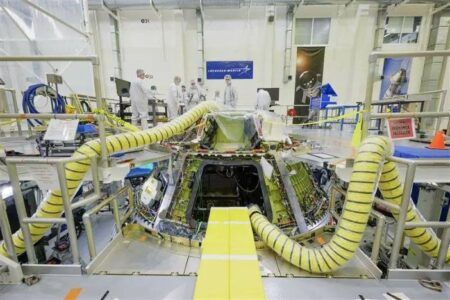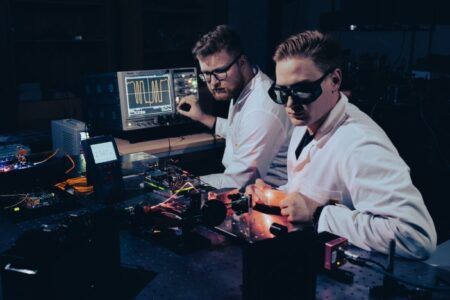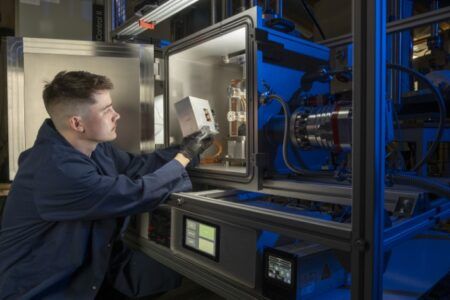Inside a large, black-walled facility outside Denver, Colorado, NASA’s Satellite Servicing Projects Division (SSPD) team successfully completed the latest testing of three rendezvous and proximity operations sensors used for satellite servicing applications and beyond. These sensors are needed for the autonomous rendezvous of spacecraft, which is a vital technology for robotically servicing a satellite.
Held at Lockheed Martin’s Space Operations Simulation Center (SOSC), this round of testing involved a Vision Navigation System (VNS) light detection and ranging (lidar) sensor, the Goddard Reconfigurable Solid-state Scanning Lidar (GRSSLi) sensor, and the wide field-of-view visible camera. These three instruments were tested side-by-side in different situations to assess their accuracy and sensitivity for eventual use in satellite servicing. The sensors all contribute to helping a servicer “see” and approach a client.
“These sensors are the key to tackling the most difficult part of satellite servicing, the autonomous rendezvous. Our team was very pleased with the performance of these imagers in a space-like environment,” said Bob Smith, satellite servicing project manager.
To rendezvous autonomously, two spacecraft must connect without any human control or input. A combination of sensors, algorithms and a computer are essential to generate the precise maneuvers needed for this challenging operation.
During testing at SOSC, engineers simulated multiple scenarios. To start, the three-instrument suite was set to a fixed position and viewed calibrated targets at known distances to calibrate their instrument’s light and distance sensitivity.
Next, engineers used a model of a satellite affixed to a moving robot, and instruments mounted on another robot to ‘fly’ toward the satellite to record data during this simulated, controlled rendezvous.
In addition to gathering light and distance measurements using VNS and GRSSLi, this test also allowed operators to test algorithms that determine the position and orientation or ‘pose’ of a satellite while conducting a simulated rendezvous.
SSPD aims to demonstrate and mature technologies that are critical to satellite servicing, including the instruments derived from these tested sensors. The instruments will feed vital data to a cutting-edge SpaceCube computer, which will process the data for autonomous tracking, approach and grasping of a client accordingly.
The testing conducted at the SOSC confirmed improved performance for light intensity and range measurements by the imagers. The results also indicate that the VNS is progressing on schedule per the SSPD timeline.
In addition to satellite servicing testing, there were also two teams from NASA’s Johnson Space Center in Houston that tested the VNS for applications specific to human exploration missions. One team gathered data for possible applications of autonomous rendezvous for visiting vehicles to the International Space Station (ISS).
The second group collected data that could be incorporated into the design of Orion, NASA’s new exploration spacecraft, designed to carry astronauts to destinations in deep space, including Mars. Both groups conducted long range testing and simulated rendezvous to a docking port mockup.
In a technology demonstration related to this SOSC testing, SSPD is also currently executing the Raven mission on the International Space Station, which is helping NASA develop autopilot for spacecraft.
While testing at SOSC helps engineers develop algorithms and verify sensor performance using calibrated distances between two objects, testing on the space station provides data on in-orbit functionality of sensors compared to ground testing, and is the best environment to test an infrared camera. Utilizing both ground-testing and flight testing is part of the process of learning and perfecting, and solving difficult engineering challenges for space exploration.
The three instruments are now back from SOSC and at NASA’s Goddard Space Flight Center in Greenbelt, Maryland, where the SSPD team is reviewing data to streamline and maximize their performance.
“The data from this testing will help us build flight cameras and lidar systems for making satellite servicing a reality,” said Benjamin Reed, SSPD deputy division director.
August 9, 2017




